How Agilent reduced time spent by 80% with automated monitoring
– and calibration
See how and why Agilent Technologies replaced traditional and manual monitoring and USB data loggers with Eupry's automated Wi-Fi-based monitoring system.

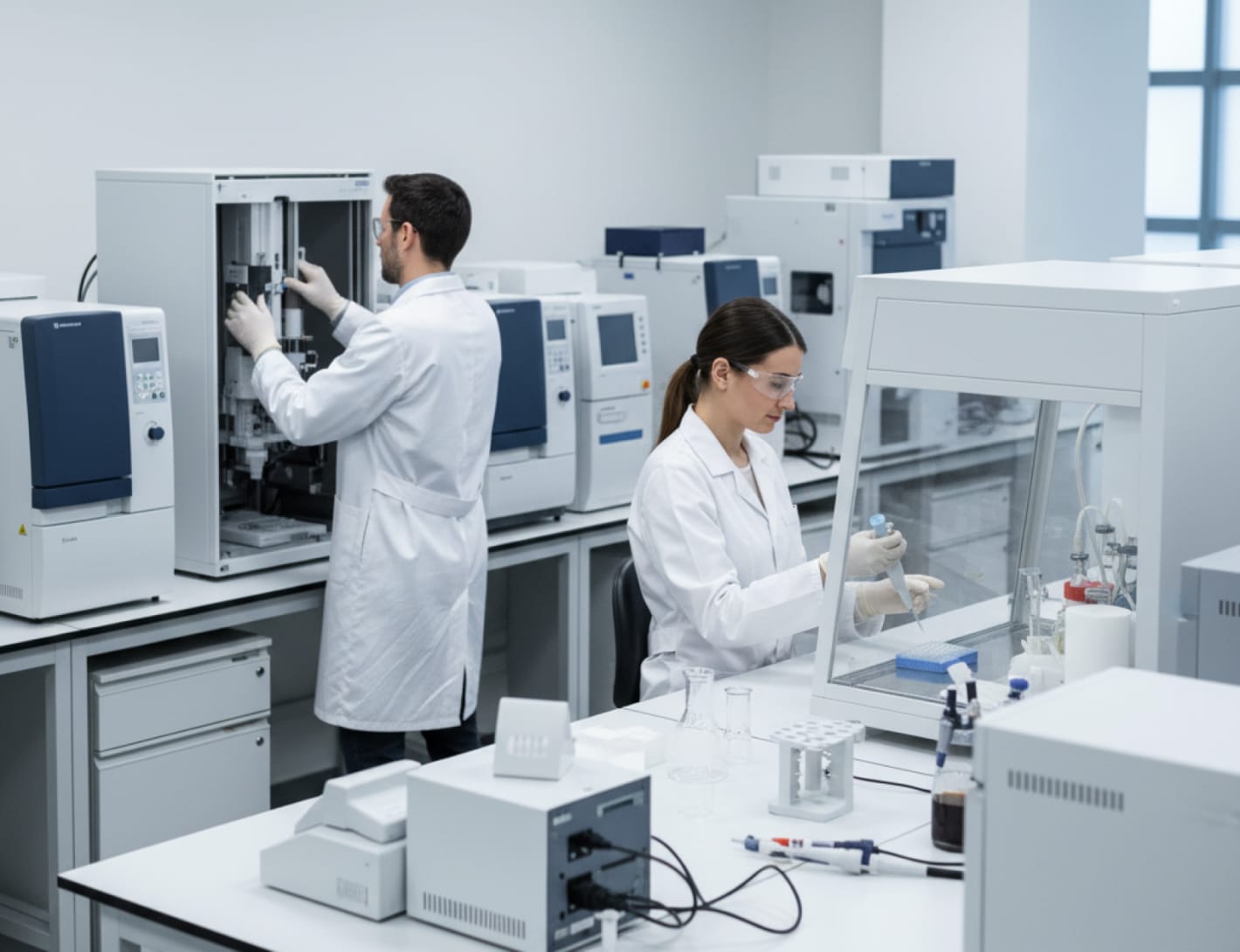
The short version: Traditional vs. automated Wi-Fi-based monitoring
Agilent's Glostrup facility monitored 180 temperature points across its production site with a traditional monitoring approach using USB data loggers. One full-time employee (engineer) spent 100% of their time handling monitoring and calibration, transferring data, converting to Excel, printing graphs, checking for deviations, and filing records.
They switched to Eupry's Wi-Fi system and:
- Time spent on monitoring dropped 80%
- Non-conformances from late detection disappeared
- The engineer could redirect freed-up capacity to building management optimization
We have to be best in class – compliant, qualified, good quality, and at the forefront of technological solutions in the area. That's why we looked into a WiFi-based system, validated according to FDA regulations, and so on (...) The Eupry system is an upgrade in many classes, also because it is a complete compliance service.
Allan Alstrup, Manager of Technical Support, Agilent
The background
- Company: Agilent Technologies
- Industry: Medtech
- Location: Glostrup, Denmark (global operation)
- Company size: Approximately 18,000 employees worldwide
- Challenge: Manual USB monitoring resulting in time waste and risks to product quality
- Solution: Automated, Wi-Fi-based temperature and humidity monitoring
- Range: 180 measuring points ranging from -196°C/-320°F to +50 °C/+122°F.
Why temperature monitoring matters at Agilent
For Agilent Technologies, temperature and humidity monitoring are critical because product quality depends on it.
Agilent has one of the broadest solutions portfolios in the pharma industry, from disease research and pharmaceutical discovery to manufacturing, and every product – from start to finish – must stay at controlled temperatures.
In other words, if monitoring fails, products can be damaged.
Temperature monitoring is very important because it can reflect on our product quality. All our products, during production, from the beginning to the end stage, have to be kept at a controlled temperature.
Allan Alstrup, Manager of Technical Support, Agilent
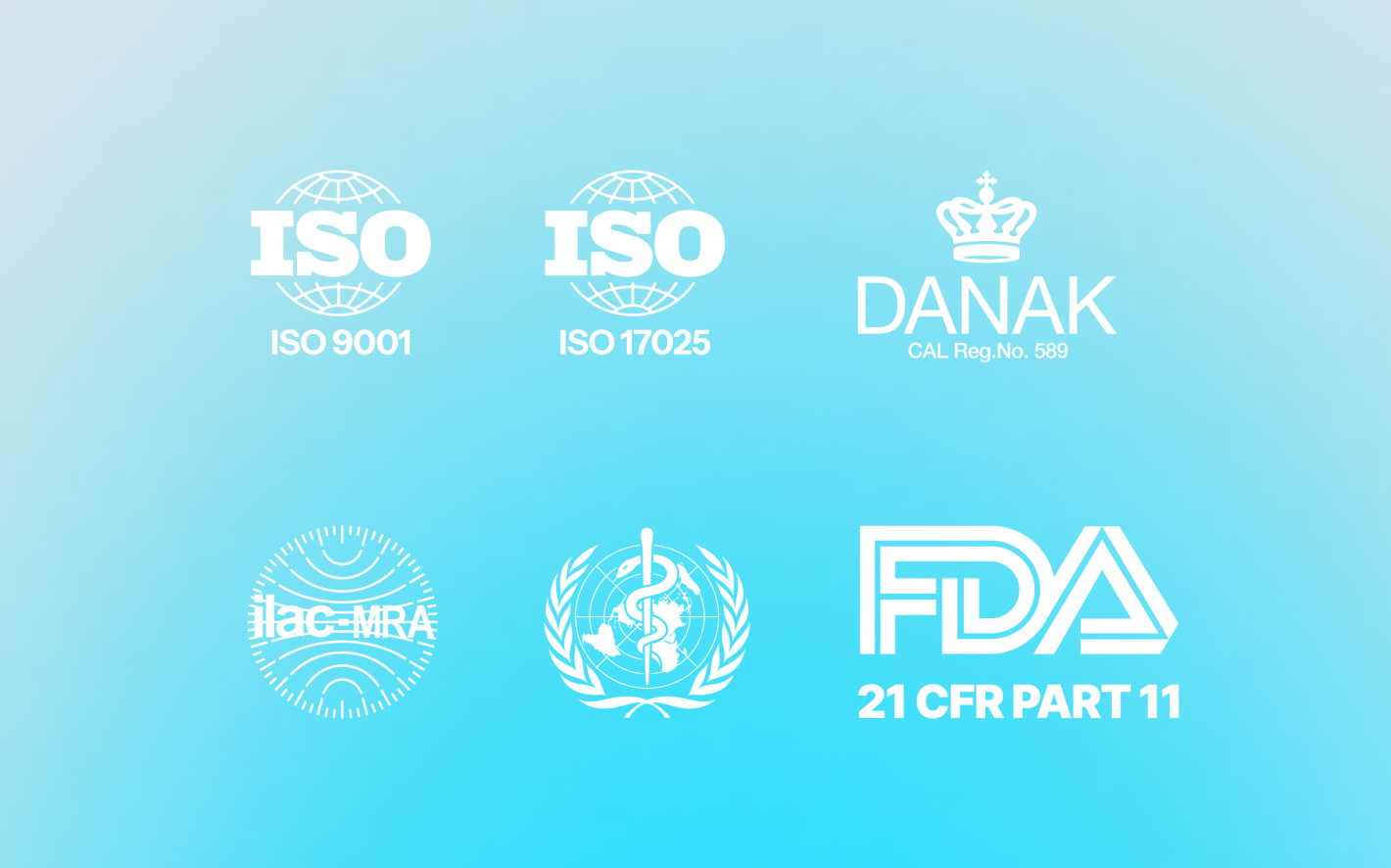
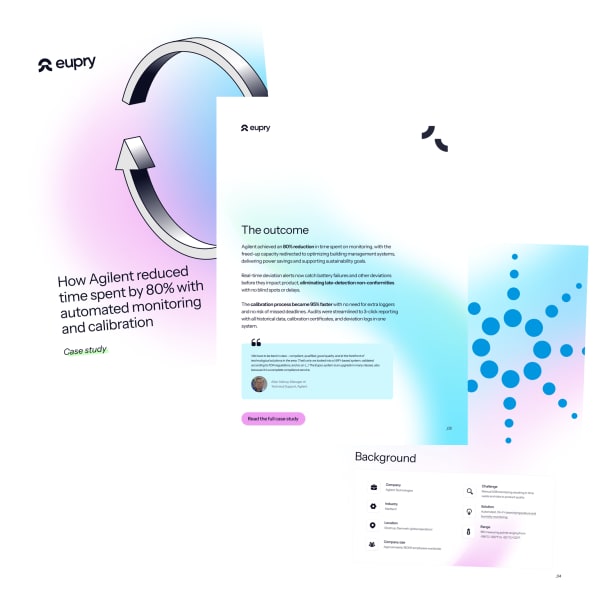
Download a case overview
Get an instant overview over the case study of how Agilent reduced time spent by 80% with automated monitoring.
The old solution
Traditional, manual monitoring
Before, temperature monitoring was done using USB loggers, which took up one full-time employee's time, handling:
- The daily monitoring: Each month, data was manually extracted via USB from all 180 loggers, imported to Excel, graphs were printed and reviewed, and the documents were filed.
- Deviation handling: When deviations occurred, it was often detected during these monthly reviews, meaning the detection was delayed.
- Calibration process: Data logger calibration was performed sporadically due to the need for extra equipment. The process required a lot of time, external involvement, and manual documentation.
We had to have double the number of data loggers that we could use as replacements during calibration. That's one of the beneficial things about Eupry. We don't have to have double equipment, because it is just the tip of the logger we change.
Allan Alstrup, Manager of Technical Support, Agilent

Why did Agilent want to change?
The USB system meant that the team was wasting time on repetitive, manual tasks, plus risked deviations being detected too late.
We wanted to change to a Wi-Fi-based system to use fewer resources, and have a better overview of the data and how the units are actually performing.
Allan Alstrup, Manager of Technical Support, Agilent
Therefore, they wanted a monitoring system that would:
- Reduce manual work
- Provide a better overview of conditions
- Make it possible to respond to deviations in real-time
Being best in class is the vision for Agilent: Being the best for our customers, having the best products, and following the developments of Industry 4.0 in terms of digitalization, automation, and simplifying procedures (...) We have to always think about how we can do things better. That's what's driving me, making things easier – and moving to Eupry’s system is a good step.
Allan Alstrup, Manager of Technical Support, Agilent
The new solution
Automated, Wi-Fi-based monitoring
with ISO 17025 on-the-wall calibration
Agilent evaluated three temperature monitoring systems and chose Eupry’s automated monitoring solution because it met their demands best and provided:
- Real-time monitoring with instant alerts
- Automated data handling
- Simplified calibration process
- Single database for all data and certificates
- Leasing model (no hardware issues)
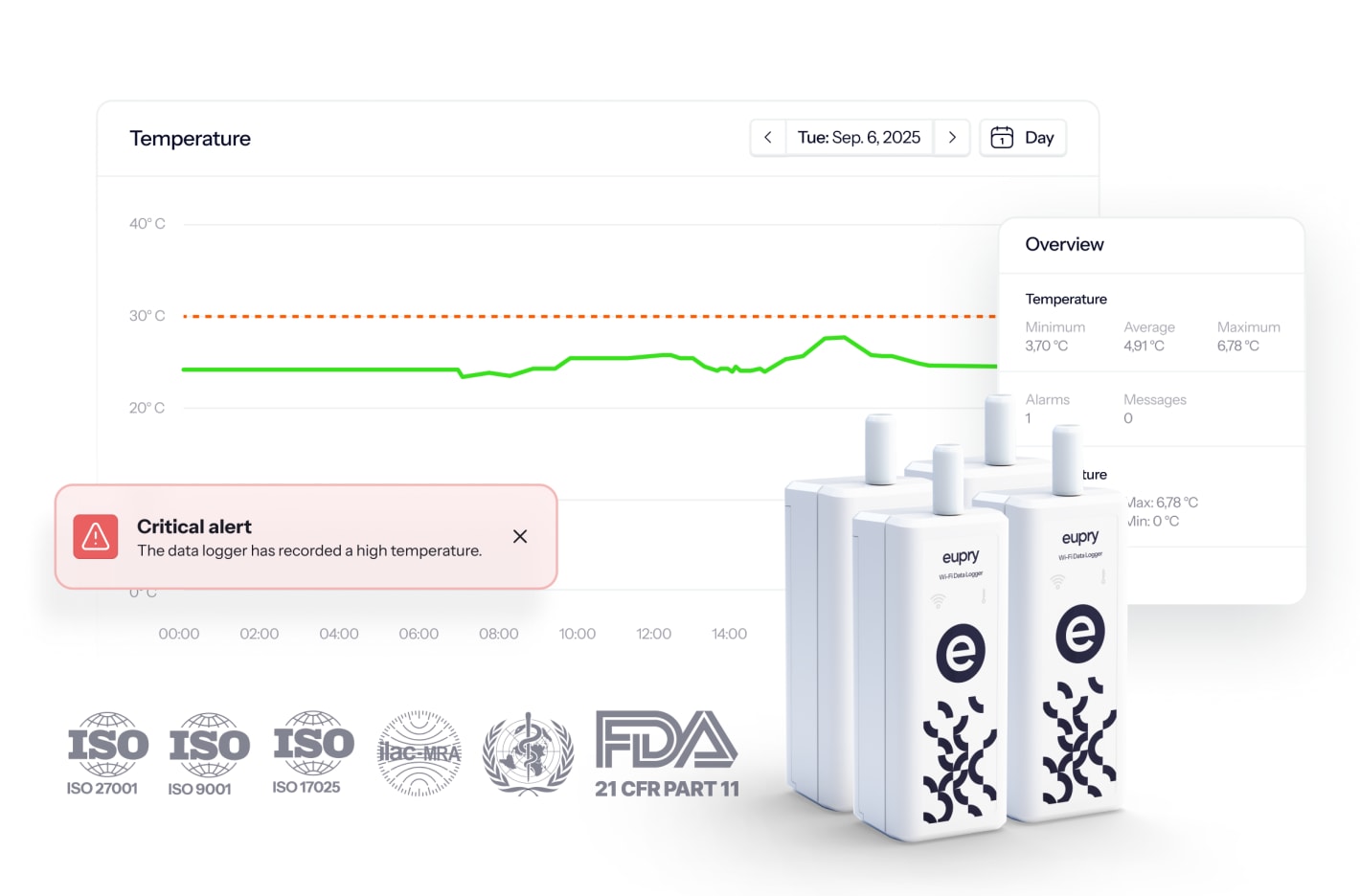
Why did Agilent chose Eupry?
We looked into three systems: A Testo, a Thermo-Scientific, and then we were presented with Eupry. In the end, we measured the systems against each other according to our demands, and found that Eupry gives us the most beneficial things.
Allan Alstrup, Manager of Technical Support, Agilent
What changed?
Comparison: Manual vs. automated monitoring

#1: From manual, error-prone processes to automated monitoring
Before
180 manual downloads monthly + manual Excel conversions, reviews, and filing.
- Visit each logger
- Download data via USB
- Import to Excel
- Print graphs
- Review for deviations
- Sign off
- File records
Repeat 180 times per month.
This was a very labour-heavy, full-time job for one person, and it's not a fun job to do because it's the same, the same, the same.
Allan Alstrup, Manager of Technical Support, Agilent
Now
Automated monitoring using Wi-Fi-based data loggers that send data automatically to the included monitoring platform.
- All data in one platform
- No USB transfers

#2: From reactive to proactive, automated deviation handling
Before
Manual deviation handling, where detection was often delayed, and all logging required manual NCR creation and filing.
Now
Automated deviation detection and management in the platform.
- Reduced alarms: By filtering out insignificant alarms and grey zones, and personalizing who gets what alerts and when.
- Faster response: Through instant alarms on SMS and email.
- Automatic alarm logging: To create NCRs easily.
#3: From a paper-based, cumbersome process to automated calibration
Before
Time-consuming calibration disrupting the operation continuously throughout the year to account for calibration schedules and the limitations of extra data loggers.
The old process:
- Store extra equipment
- Replace data loggers with extra loggers
- Send the old ones for external calibration
- Replace the data loggers again
- File the manual paperwork
Every time we had a calibration routine, we had to take out the data logger, put in another one, send it out to an external supplier, and get it calibrated – and then, two weeks later, it came back, and we had to switch it again. It was a lot of paperwork (...) we received the certificates by e-mail, archived them in Outlook, printed them, verified them, signed them, and put them into a paper archive in the basement.
Allan Alstrup, Manager of Technical Support, Agilent
Result:
- Wasted time
- Worries about schedules
- Extra equipment costs & hassle
Now
All calibrations can be done in one go with Eupry’s patented on-the-wall calibration solution.
It takes a minute, and we have a newly calibrated data logger. It is just taking out the sensor and then putting in a new one. It will automatically transfer all the data and the new certificate to this logger in the system.
Allan Alstrup, Manager of Technical Support, Agilent
Result:
- No need for extra loggers
- 95% less time compared to traditional calibration
- No risks of calibration deadlines being missed
#4: From time-consuming, stressful audits to 3-click reporting
Agilent faces both customer and regulator audits, and the new system has changed the auditing process quite a bit:
Before
Manually compiling reports and hunting down paperwork.
Calibration certificates: The team compiled the relevant certificates across calibration and the 180 loggers by locating them in a physical filing archive.
Before, we archived certificates in a paper archive in the basement, and as a result, it was a struggle when an auditor asked to see certificates for loggers for, for instance, the last three years. We had to go to the basement, find the right certificates, and scan and send them. Then they could see that everything was fine, but it was just a big struggle for us.
Allan Alstrup, Manager of Technical Support, Agilent
Monitoring reports: The Agilent team had to find the relevant period in binders, scan the papers, compile different periods, and send them to the auditor.
When you have a paper archive, you often have to run around and find the documents. If someone else signed them out of the archive, you have to track them down and, in the end, put them all together. It is quite a big job to make a monitoring report.
Allan Alstrup, Manager of Technical Support, Agilent
Now
One system, all data, exported with just a few clicks.
The Eupry platform holds everything Agilent needs to secure and demonstrate compliance:
- Monitoring data
- Deviation logs
- Calibration certificates
And much more.
3-click audit reporting with all the historical data auditors expect.
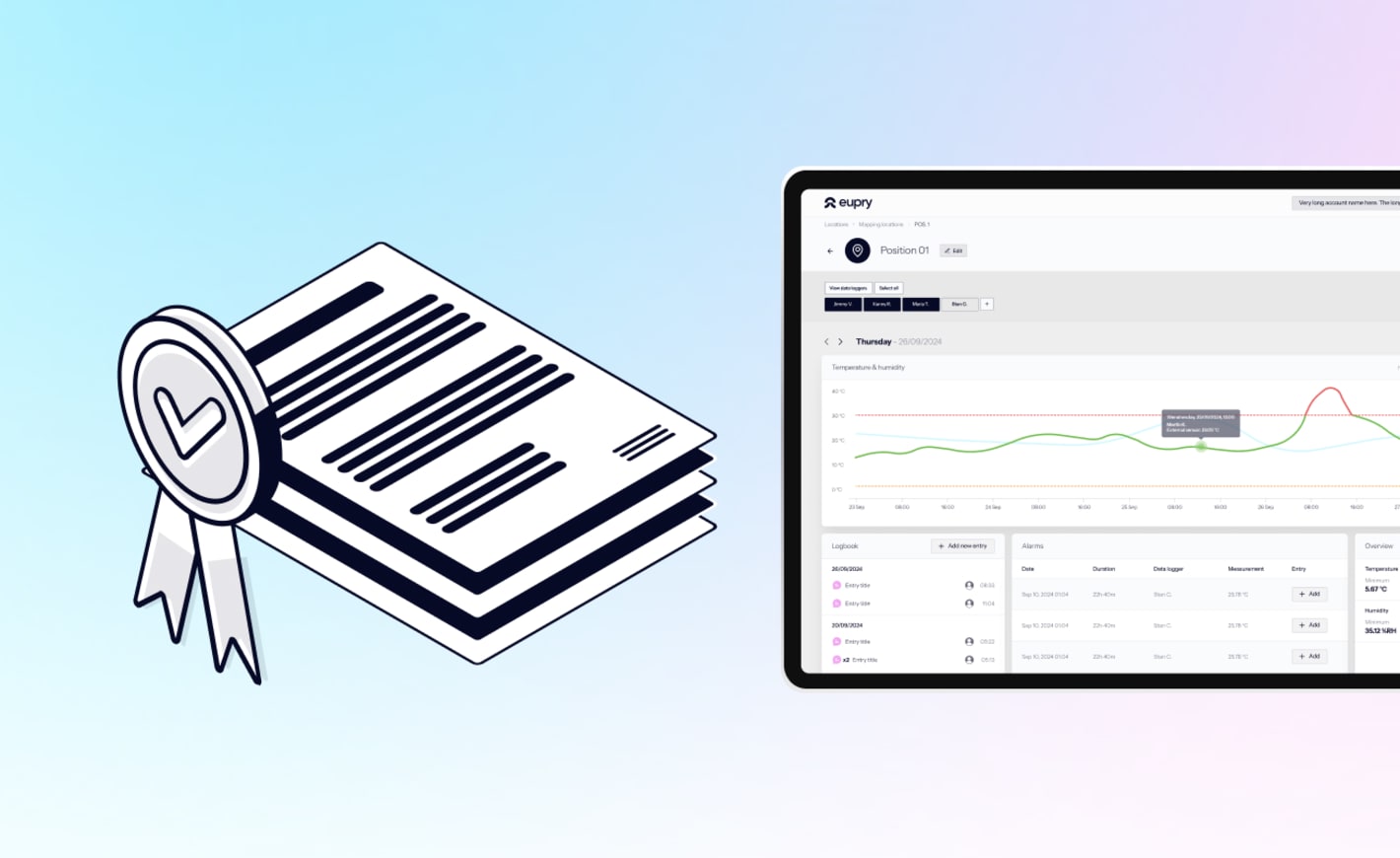
#5: From extra equipment issues to a leased solution
Before
Extra equipment hassle since the team had +100 extra data loggers stored for calibration purposes.
- Maintenance issues
- Unpredictable extra costs
We needed to have extra equipment for when we calibrated, so we had almost double up, which also meant double the maintenance. This equipment had a 5-7 year life cycle, and then it was often outdated, the software didn’t work, and so on, and we had to buy new.
Allan Alstrup, Manager of Technical Support, Agilent
Now
Fully updated, leased solution with warranty.
- Full hardware warranty (if it breaks, we replace it - but it won’t).
- Leasing solution with calibration included
- Predictable costs and reduced TCO
With Eupry, I’m not the one responsible for keeping the hardware and software up to date. I just lease a service, and then Eupry is responsible for keeping this up to date with the newest technology.
Allan Alstrup, Manager of Technical Support, Agilent
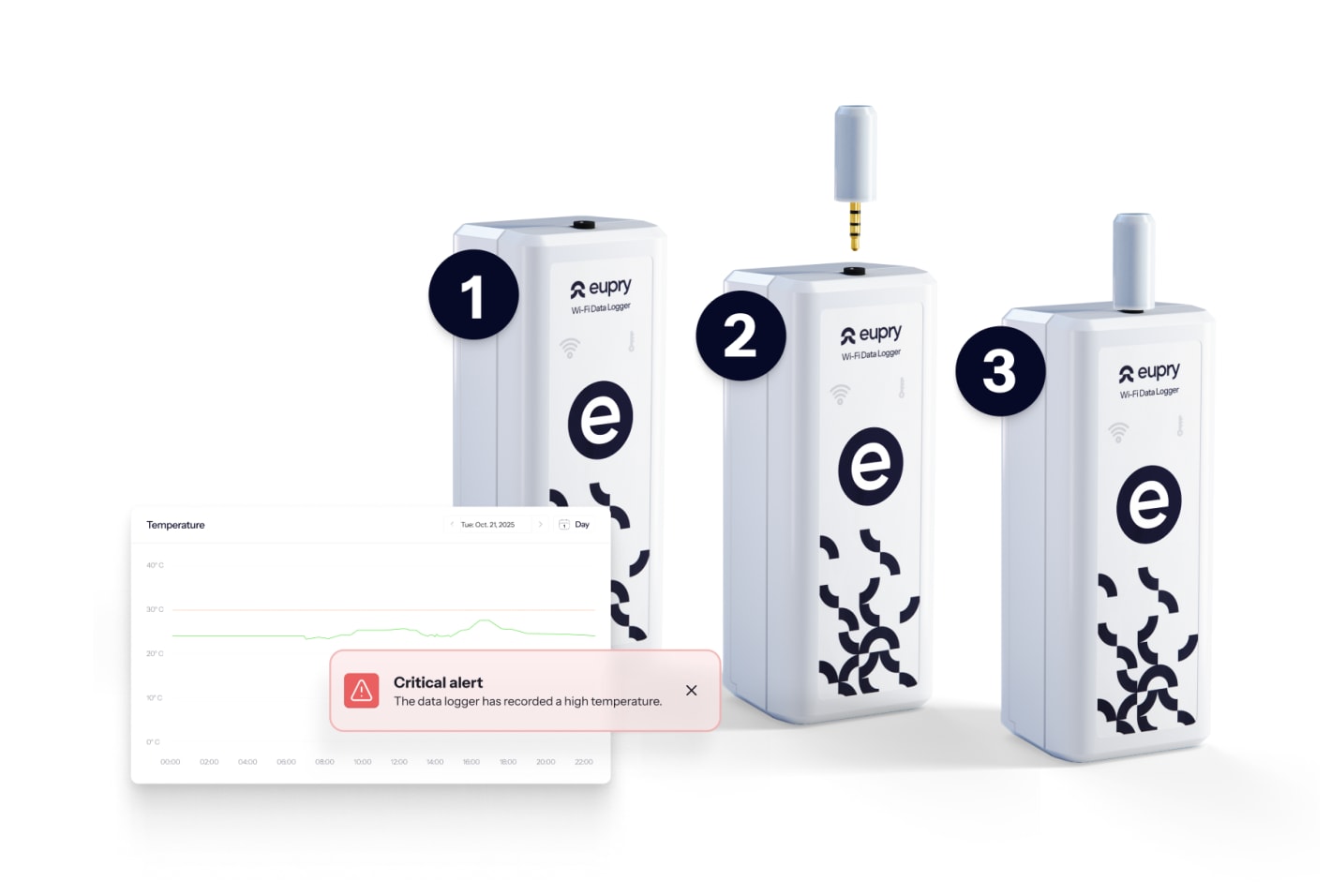

See how the automated monitoring solution works
Download a free product catalog and get an instant overview of the workings of Eupry's automated, Wi-Fi-based thermal compliance solutions.
The outcome

Eliminated late-detection non-conformities
Real-time deviation alerts catch battery failures and other deviations before they impact product.
No blind spots, no delays.
Real-time means we will be able to act up front and actually avoid non-conformance.
Allan Alstrup, Manager of Technical Support, Agilent

80% reduction in time spent on monitoring
The freed-up capacity can go to optimizing building management systems, work that delivers power savings and supports Agilent's sustainability goals.
That 80% we can use on the rest of the system or other things.
Allan Alstrup, Manager of Technical Support, Agilent
Learn more
Discover how Eupry's automated compliance (monitoring, calibration, and validation) solutions work today.